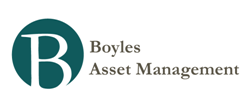Hussman Weekly Market Comment: Misquoting Keynes
The famous quote attributed to John Maynard Keynes - "the market can remain irrational longer than you can remain solvent" - is a favorite of speculators here. Actually, I very much agree with this observation, provided that it is correctly understood. Solvency is always a function of debt, and it's extremely important for investors to recognize that when you take investment positions by borrowing on margin, you'd better use stop-losses, because the debt obligation stays intact even if the investment values decline.
On the other hand, we certainly don't believe that this aphorism amounts to a recommendation that it is required (or even advisable) for investors to accept speculative risks just because prices are advancing, particularly at the point where overvalued, overbought, overbullish conditions are joined by rising interest rates, as they are at present.
In my view, the more appropriate quote for the present environment is from Benjamin Graham: "Speculators often prosper through ignorance; it is a cliché that in a roaring bull market knowledge is superfluous and experience is a handicap. But the typical experience of the speculator is one of temporary profit and ultimate loss."
Ironically, while the "irrational longer than you can remain solvent" quote is embraced by speculators as a license to take risk, they may not recognize that whatever lesson might be learned from Keynes has nothing to do with his views about "irrational" market advances. Rather, Keynes' learned his lesson as a result of steep losses that resulted from holding a poorly diversified portfolio - apparently on margin - during a market plunge, years after the Depression trough of 1932. As biographer Robert Skidelski observes, "In the year of the 'terrific decline' which had started in the spring of 1937, he lost nearly two-thirds of his money."
Let's briefly walk through the 1930's, to examine the context in which Keynes was operating. As I've noted in prior commentaries, the U.S. stock market at its 1929 peak was priced to achieve slightly negative total returns over the following decade (based on estimates using our standard methodology). Once the market had lost half of its value, the prospective 10-year total return reached 10% annually. From there, however, the market would lose another two-thirds of its value to its ultimate trough in 1932. All told, the market lost more than 80% from the 1929 peak to the 1932 low (which is what you get when a 50% loss is compounded with a 67% loss).
By 1937, the favorable valuations that existed at the 1932 trough were long gone. Stocks were overbought and overvalued, and interest rates were rising. The Dow moved above 194 at the beginning of March 1937, when in a conversation with Felix Somary ("the Raven of Zurich"), Keynes said "We will not have any more crashes in our time." Over the following year, the market lost about half its value, with the Dow reaching its trough near the 100 level. Based on our standard methodology for estimating prospective 10-year total returns on the S&P 500, a reasonable projection at the March 1937 market peak was only about 6% annually. The Shiller P/E was over 23 (meanwhile, long-term Treasury yields were at 2.84% and trending higher). By March 1938, the plunge in the market was enough to increase the projected 10-year total return of the S&P 500 to over 14% annually.
Judging from Keynes' confident assertion in 1937 that major market losses could be ruled out in the future, we might infer that the sentiment of investors at the time was probably overbullish, as well as being overvalued, overbought and coupled with rising yields. Needless to say, from our perspective, Keynes walked right into the 1937-1938 plunge.
That said, by early 1938, the market troughed, and with prospective long-term market returns now significantly higher, the market would gain nearly 50% in the next 8 months before stumbling again, experiencing a series of 20-30% gains and losses - though with little durable progress - for nearly a decade. One could have performed quite well over the full period by recognizing that while prospective returns may be very attractive at market troughs, they are no longer attractive - and sometimes abysmal - once a substantial advance has occurred.
Fast forward to the present, and the lessons that we should keep in mind here.
- Hussman Weekly Market Comment: Confidence Abounds
Confidence abounds. Last week, Investor’s Intelligence reported a surge in advisory sentiment to the highest bullish percentage since October 19, 2007. The National Association of Active Investment Managers (NAAIM) reported that the 3-week average equity...
- Hussman Weekly Market Comment: Sitting Ducks
The present market context is this: from a valuation standpoint, virtually every reliable measure of market valuation we observe is now within the highest 1% of historical observations prior to the late-1990’s bubble. “Reliable” in this context...
- Hussman Weekly Market Comment: Release The Kraken
Over the past 13 years, and including the recent market advance, the S&P 500 has underperformed even the minuscule return on risk-free Treasury bills, while experiencing two market plunges in excess of 50%. I am concerned that we are about to continue...
- Hussman Weekly Market Comment: Rich Valuations And Poor Market Returns
Last week, the S&P 500 Index ascended to a Shiller P/E in excess of 24 (this "cyclically-adjusted P/E" or CAPE represents the ratio of the S&P 500 to 10-year average earnings, adjusted for inflation). Prior to the mid-1990's market bubble,...
- Hussman Weekly Market Comment: Borrowing Returns From The Future
Two aphorisms regularly become popular during speculative periods in the market. One is the statement by John Maynard Keynes that "the market can stay irrational longer than you can remain solvent." The other is Warren Buffett's remark that "a pack...

